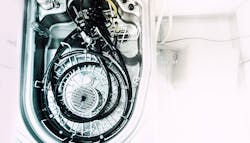Looking ahead at endoscope reprocessing quality performance
The coming decade, initiated by a global pandemic, promises to bring considerable changes to the sterile processing profession and how the Sterile Processing & Distribution (SPD) department services its customers, the Operating Room (OR).
For the third consecutive year, Healthcare Purchasing News surveyed more than a dozen sterile processing subject matter experts on seven potential – but likely scenarios – that may direct and redirect how SPD navigates the 2020s. HPN asked the executives from device manufacturers and reprocessing product companies to rank the seven strategies (1 being the most important or influential; 7 being the least important or influential).
To show the trends year over year, HPN publishes the aggregate respondent data from 2019 and 2018 as well.
One noteworthy result is that the top two strategies this year represent a transposition of the same two last year. And while Big Brother continues to languish at the bottom, the Bullwhip curiously moves up two notches above major device shifts.
1. Thoroughly educating, training, vetting and certifying SPD staffers on proper and effective cleaning techniques
2020 average score: 2.43
2019 average score: 2.5
2018 average score: 1.5
2. Demanding, receiving and following validated instructions for use (IFUs)
2020 average score: 2.64
2019 average score: 1.9
2018 average score: 2.5
3. Switching to endoscopes that contain disposable/single-use-only components that can be swapped out (if available)
2020 average score: 3.62
2019 average score: 4.1
2018 average score: n/a
4. Holding staffers accountable/responsible for endoscope cleaning “violations”
2020 average score: 4.23
2019 average score: 4.8
2018 average score: 2.8
5. Switching to disposable/single-use-only endoscopic devices for selected endoscopic procedures only (e.g., bronchoscopy, etc.)
2020 average score: 4.46
2019 average score: 4.3
2018 average score: n/a
6. Switching to disposable/single-use-only endoscopic devices for all endoscopic procedures
2020 average score: 4.77
2019 average score: 6.1
2018 average score: 4.8
7. Comprehensively monitoring and tracking all steps in the process with sensors and video technology
2020 average score: 4.85
2019 average score: 4.7
2018 average score: 3.4
HPN invited respondents to explain their perspectives and even offer alternatives. Here’s what they shared.
“A second factor to consider in the prioritization involves consideration of the patient’s comorbidities,” McGinty continued. “A third factor to consider is for the high-risk procedures performed ‘after hours’ to eliminate the need for reprocessing by staff who may have less opportunity to prove competency. In the meantime, high-quality reprocessing requires education, competency, attention to reprocessing steps (validated by tracking), possession of and following of validated, ‘doable’ instructions for use, and certainly accountability by the staff performing the processes.”
Seth Hendee, CRCST, CIS, CHL, CER, CSPDT, CFER, Clinical Education Coordinator, SPD, Healthmark Industries Co., encourages SPDs to apply a resource management mindset to the process.
“Setting and adhering to a realistic expectation for the number of procedures that are able to be performed in a day/shift [is key, as well as] factoring in the number of endoscopes and the actual time it takes to follow all processing steps correctly,” he said.
What do you think about any of these findings and opinions? Drop us a line at [email protected] or share your opinions at HPN Online (www.hpnonline.com).
- Outlook Endoscopy: What’s next for endoscope reprocessing and device design?
- Looking ahead at endoscope reprocessing quality performance
- Techniques and tips for aeration, drying and storage
- Why ergonomics should not be over- looked
- Advance SPD to include higher-paid specialist teams
- The true colors of hydrogen peroxide sterilization chemical indicator strips
- Periscope: Color-coded standard needed for hydrogen peroxide sterilization indicator strips
- Endoscope Care in 2020 and beyond


